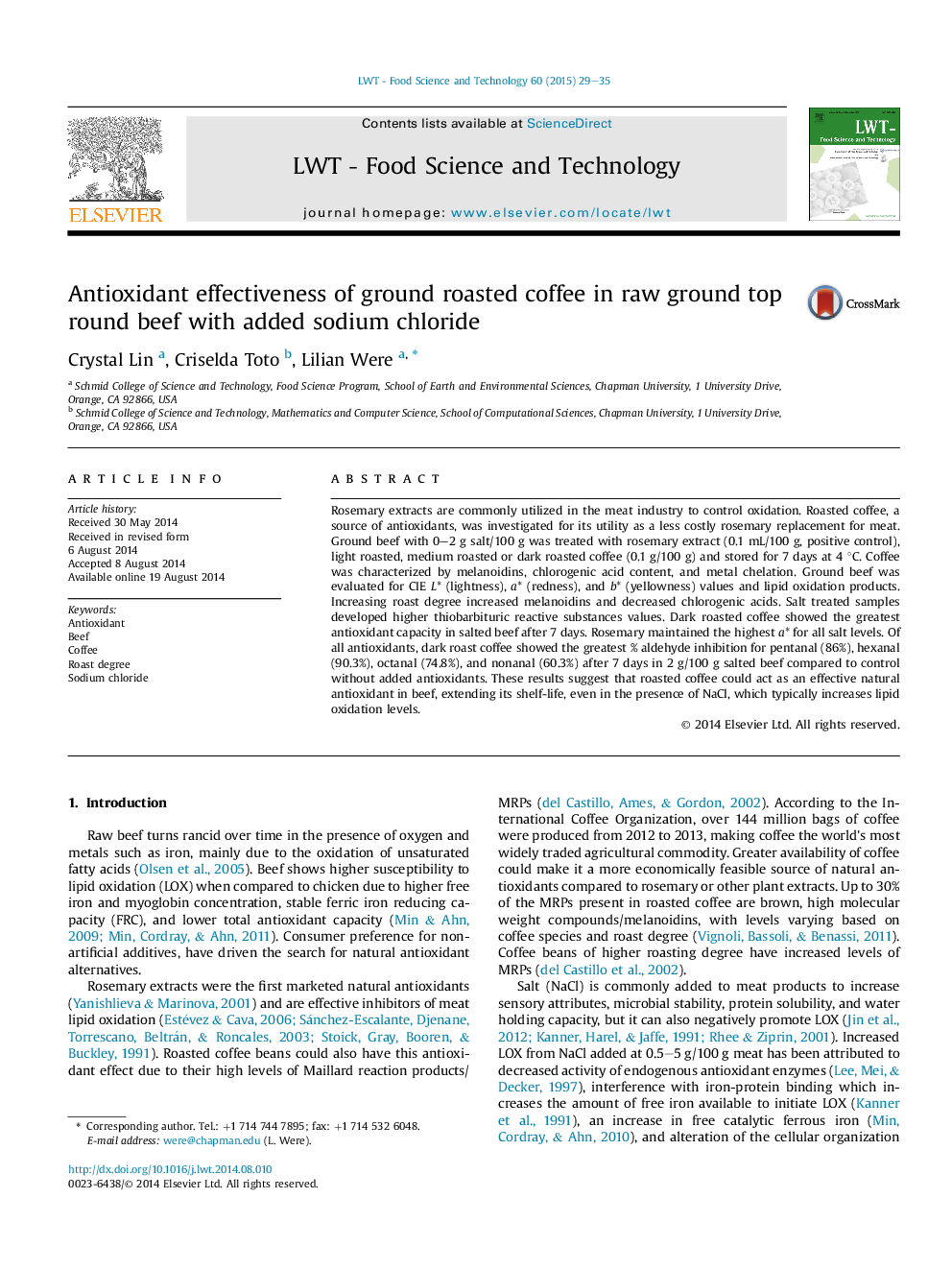| کد مقاله | کد نشریه | سال انتشار | مقاله انگلیسی | نسخه تمام متن |
|---|---|---|---|---|
| 6402783 | 1330891 | 2015 | 7 صفحه PDF | دانلود رایگان |
- Coffee lowered lipid oxidation products in beef to the same or greater extent than rosemary.
- Dark roasted coffee exhibited the strongest antioxidant effect compared to control.
- Addition of NaCl did not diminish coffee's antioxidant capacity.
Rosemary extracts are commonly utilized in the meat industry to control oxidation. Roasted coffee, a source of antioxidants, was investigated for its utility as a less costly rosemary replacement for meat. Ground beef with 0-2 g salt/100 g was treated with rosemary extract (0.1 mL/100 g, positive control), light roasted, medium roasted or dark roasted coffee (0.1 g/100 g) and stored for 7 days at 4 °C. Coffee was characterized by melanoidins, chlorogenic acid content, and metal chelation. Ground beef was evaluated for CIE L* (lightness), a* (redness), and b* (yellowness) values and lipid oxidation products. Increasing roast degree increased melanoidins and decreased chlorogenic acids. Salt treated samples developed higher thiobarbituric reactive substances values. Dark roasted coffee showed the greatest antioxidant capacity in salted beef after 7 days. Rosemary maintained the highest a* for all salt levels. Of all antioxidants, dark roast coffee showed the greatest % aldehyde inhibition for pentanal (86%), hexanal (90.3%), octanal (74.8%), and nonanal (60.3%) after 7 days in 2 g/100 g salted beef compared to control without added antioxidants. These results suggest that roasted coffee could act as an effective natural antioxidant in beef, extending its shelf-life, even in the presence of NaCl, which typically increases lipid oxidation levels.
Journal: LWT - Food Science and Technology - Volume 60, Issue 1, January 2015, Pages 29-35
